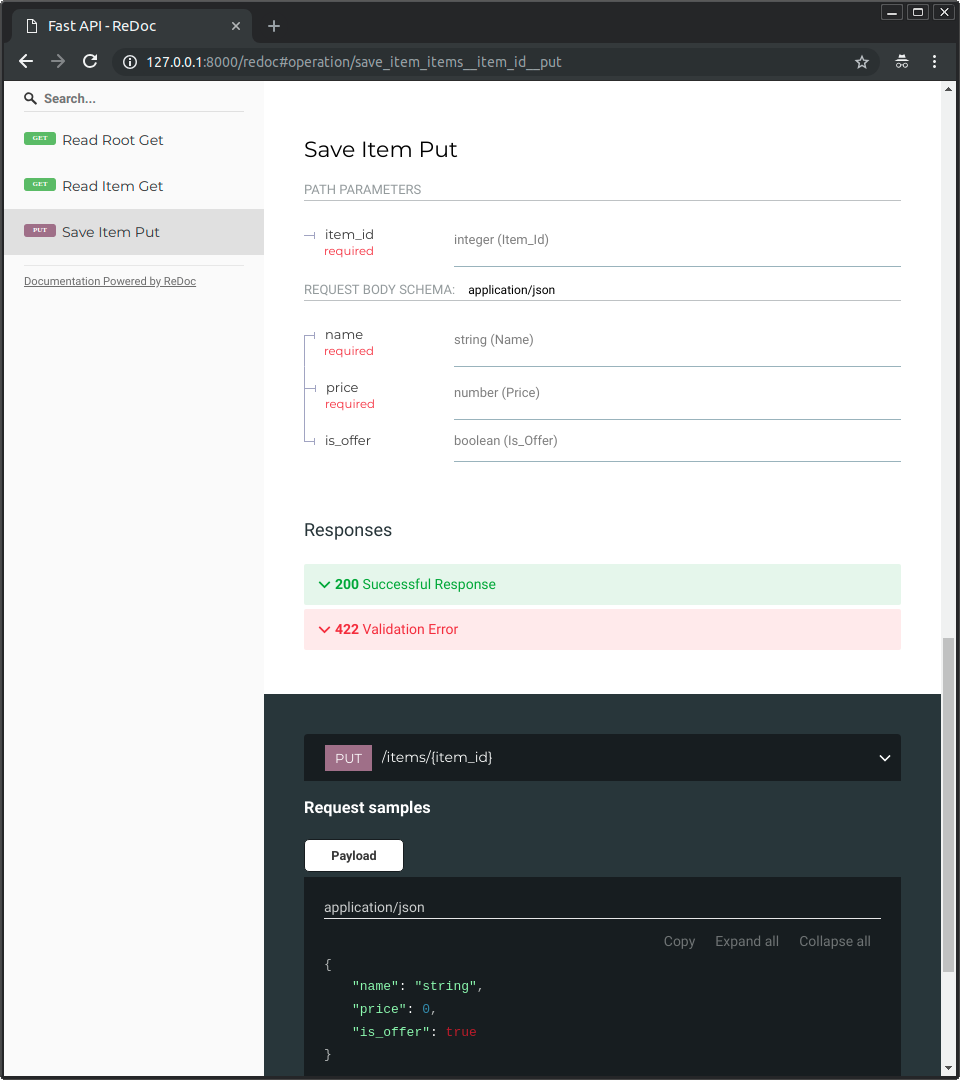- Sort Score
- Result 10 results
- Languages All
Results 131 - 140 of 214 for declarar (0.07 sec)
-
docs/pt/docs/index.md
* A documentação alternativa também irá refletir o novo parâmetro da _query_ e o corpo:  ### Recapitulando Resumindo, você declara **uma vez** os tipos dos parâmetros, corpo etc. como parâmetros de função. Você faz isso com os tipos padrão do Python moderno.
Registered: Sun Sep 07 07:19:17 UTC 2025 - Last Modified: Sun Aug 31 10:49:48 UTC 2025 - 21.6K bytes - Viewed (0) -
android/guava-testlib/src/com/google/common/testing/AbstractPackageSanityTests.java
* AbstractPackageSanityTests} doesn't know how to construct, the test will fail. * <li>If there is no visible constructor or visible static factory method declared by {@code * C}, {@code C} is skipped for serialization test, even if it implements {@link * Serializable}. * <li>Serialization test is not performed on method return values unless the method is a
Registered: Fri Sep 05 12:43:10 UTC 2025 - Last Modified: Tue May 13 17:27:14 UTC 2025 - 17.8K bytes - Viewed (0) -
docs/fr/docs/advanced/response-directly.md
Mais vous pouvez toujours les documenter comme décrit dans [Additional Responses in OpenAPI](additional-responses.md){.internal-link target=_blank}.
Registered: Sun Sep 07 07:19:17 UTC 2025 - Last Modified: Sat Nov 09 16:39:20 UTC 2024 - 3.6K bytes - Viewed (0) -
docs/en/docs/tutorial/sql-databases.md
Because each SQLModel model is also a Pydantic model, you can use it in the same **type annotations** that you could use Pydantic models. For example, if you declare a parameter of type `Hero`, it will be read from the **JSON body**. The same way, you can declare it as the function's **return type**, and then the shape of the data will show up in the automatic API docs UI.
Registered: Sun Sep 07 07:19:17 UTC 2025 - Last Modified: Sun Aug 31 09:15:41 UTC 2025 - 15.4K bytes - Viewed (0) -
docs/en/docs/tutorial/dependencies/classes-as-dependencies.md
We can do better... ## What makes a dependency { #what-makes-a-dependency } Up to now you have seen dependencies declared as functions. But that's not the only way to declare dependencies (although it would probably be the more common). The key factor is that a dependency should be a "callable".Registered: Sun Sep 07 07:19:17 UTC 2025 - Last Modified: Sun Aug 31 09:15:41 UTC 2025 - 6.7K bytes - Viewed (0) -
docs/en/docs/tutorial/request-form-models.md
/// /// note This is supported since FastAPI version `0.113.0`. 🤓 /// ## Pydantic Models for Forms { #pydantic-models-for-forms } You just need to declare a **Pydantic model** with the fields you want to receive as **form fields**, and then declare the parameter as `Form`: {* ../../docs_src/request_form_models/tutorial001_an_py39.py hl[9:11,15] *}Registered: Sun Sep 07 07:19:17 UTC 2025 - Last Modified: Sun Aug 31 09:15:41 UTC 2025 - 2.2K bytes - Viewed (0) -
docs/fr/docs/tutorial/background-tasks.md
* Les arguments nommés à passer à la fonction de tâche (`message="some notification"`). ## Injection de dépendances Utiliser `BackgroundTasks` fonctionne aussi avec le système d'injection de dépendances. Vous pouvez déclarer un paramètre de type `BackgroundTasks` à différents niveaux : dans une *fonction de chemin*, dans une dépendance, dans une sous-dépendance...
Registered: Sun Sep 07 07:19:17 UTC 2025 - Last Modified: Sun Nov 10 17:23:38 UTC 2024 - 5.4K bytes - Viewed (0) -
docs/es/docs/advanced/events.md
Estas funciones pueden ser declaradas con `async def` o `def` normal. ### Evento `startup` Para añadir una función que debería ejecutarse antes de que la aplicación inicie, declárala con el evento `"startup"`: {* ../../docs_src/events/tutorial001.py hl[8] *} En este caso, la función manejadora del evento `startup` inicializará los ítems de la "base de datos" (solo un `dict`) con algunos valores.
Registered: Sun Sep 07 07:19:17 UTC 2025 - Last Modified: Mon Dec 30 18:26:57 UTC 2024 - 8.2K bytes - Viewed (0) -
docs/en/docs/advanced/using-request-directly.md
Registered: Sun Sep 07 07:19:17 UTC 2025 - Last Modified: Sun Aug 31 09:15:41 UTC 2025 - 2.4K bytes - Viewed (0) -
docs/en/docs/advanced/response-headers.md
You can declare a parameter of type `Response` in your *path operation function* (as you can do for cookies). And then you can set headers in that *temporal* response object. {* ../../docs_src/response_headers/tutorial002.py hl[1, 7:8] *} And then you can return any object you need, as you normally would (a `dict`, a database model, etc).Registered: Sun Sep 07 07:19:17 UTC 2025 - Last Modified: Sun Aug 31 09:15:41 UTC 2025 - 2.3K bytes - Viewed (0)